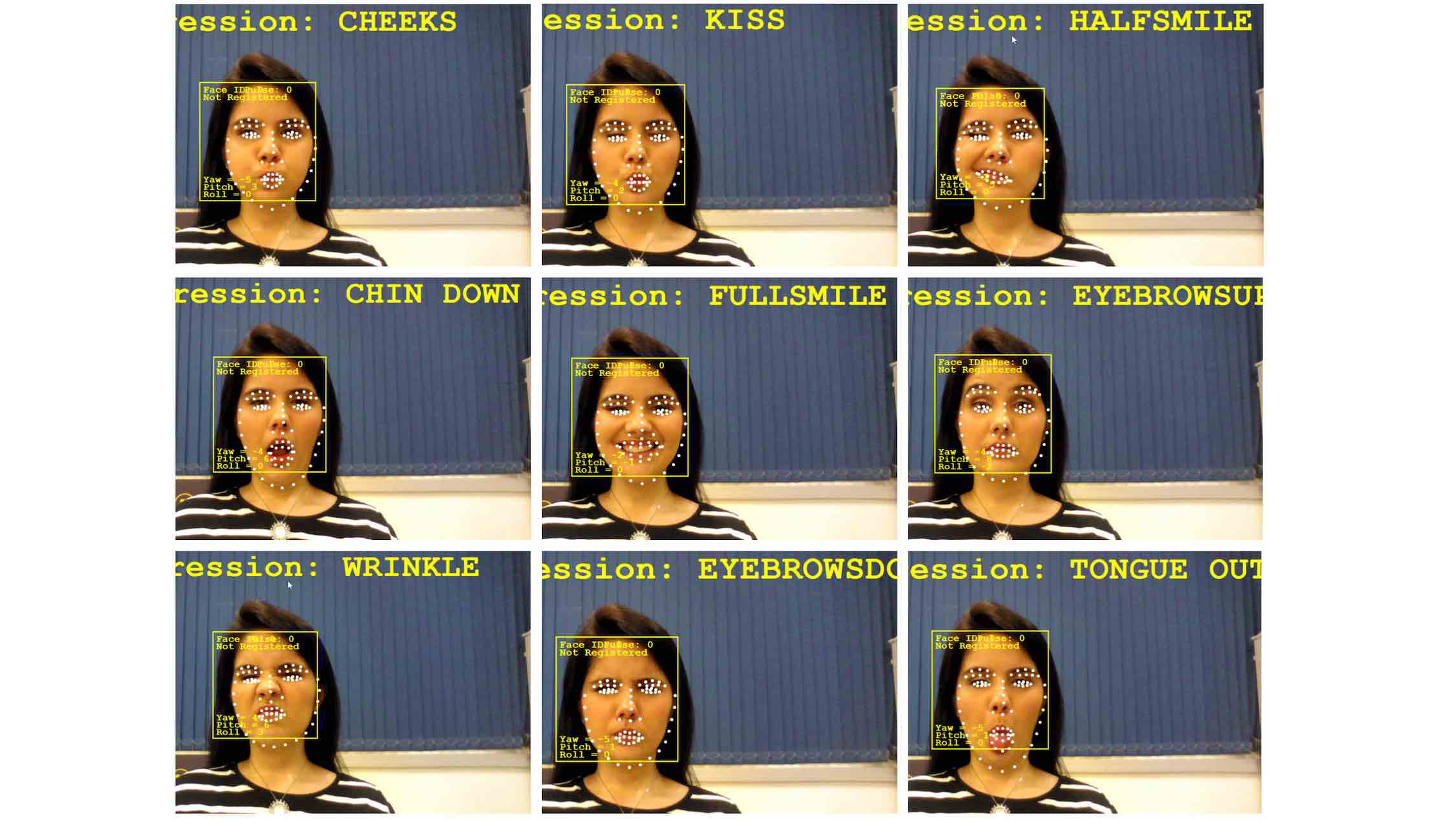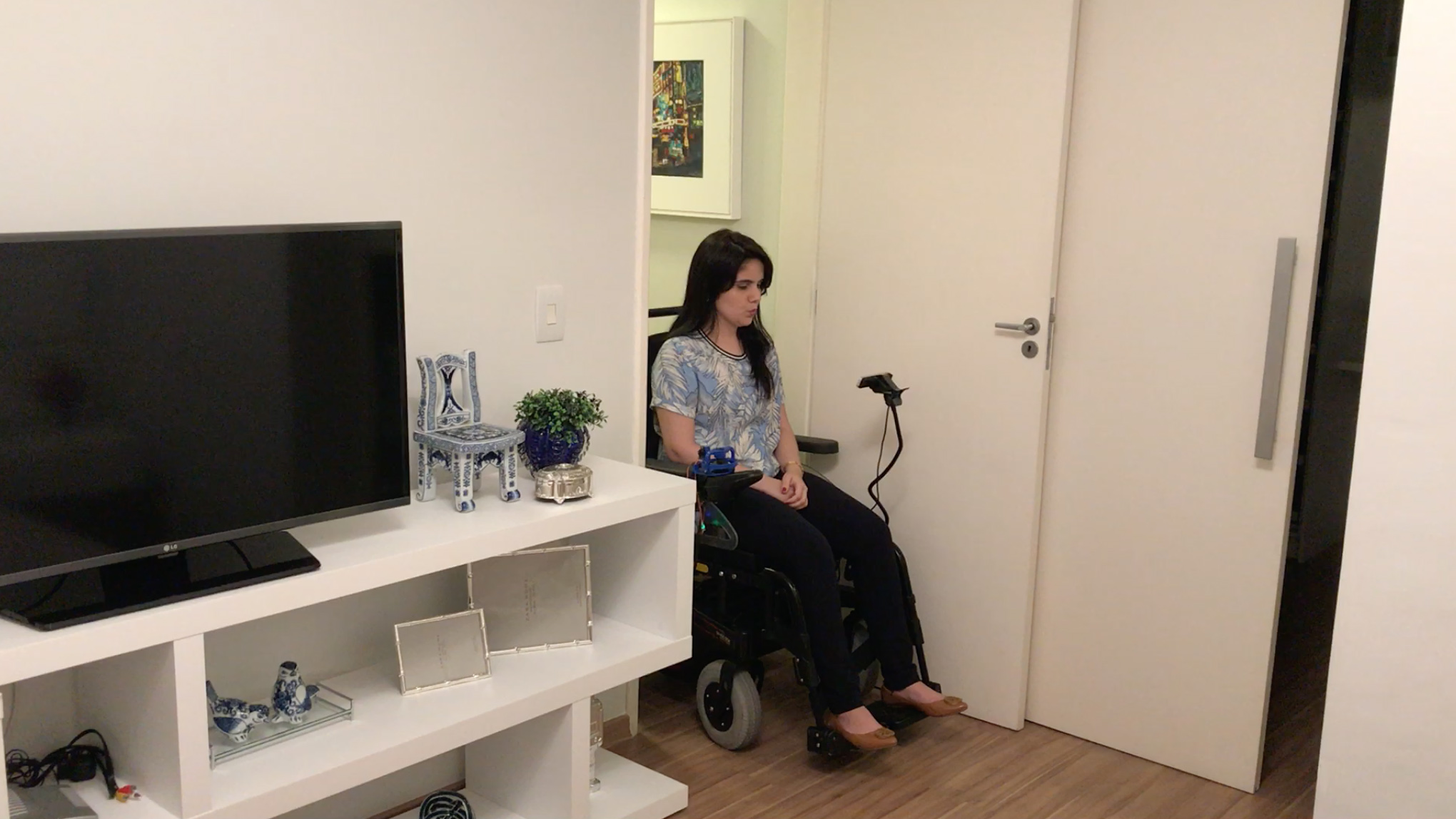
Artificial Intelligence is an intriguing prospect on many levels, but it’s where AI directly affects people and improves their lot where things get really exciting. Case in point is the collaboration between Hoobox Robotics and Intel, which has seen the conception, design and eventual creation of the world’s first motorized wheelchair package powered by facial recognition technology.
Hoobox has managed to harness the power of Intel’s AI technology and produce the Wheelie 7, its latest incarnation of an add-on kit that allows a motorized wheelchair user to move forwards, turn and stop without the need for body sensors.
Smart solution
Hoobox claims that it will take just seven minutes to install the Wheelie 7 kit. Central to the way the system works is a 3D Intel RealSense Depth Camera SR300. This is mounted to the wheelchair and is subsequently used to stream data taken from the facial gestures of its user.
In turn, AI algorithms process that data in real time, and it’s this that allows the user to take control of their own wheelchair movements. The accompanying software is able to recognize several different facial movements, including a full or half smile, a wrinkled brow, someone making a kiss gesture as well as tongue-out or puffed cheeks. These gestures can then be assigned to actions, which allow the user to go forwards and backwards, left or right and stop the wheelchair too.

At the core of this ingenious idea is the use of Intel’s Open Visual Inference & Neural Network Optimization toolkit (or OpenVINO as it’s better known). The package is already being used to develop smart solutions for a range of applications, including surveillance, smart cities and manufacturing, but the world of healthcare is where it’s being enlisted to great effect for something like the Wheelie kit.
OpenVINO includes a deep learning deployment toolkit, a model optimizer and inference engine plus computer vision algorithms. In other words, it allows a company like Hoobox Robotics to develop a unit that tackles a real human need much more rapidly that it could have done before.
Building blocks
While there is obviously a lot of development work involved in producing something like the Wheelie kit, Intel’s package comes with pre-trained data models and code samples, meaning that developers can produce their prototypes more quickly.
Get daily insight, inspiration and deals in your inbox
Sign up for breaking news, reviews, opinion, top tech deals, and more.
“It’s important to recognize the ways technology can help people regain mobility and control of their lives. The Wheelie 7 kit from Hoobox Robotics is a great example of using AI to enable people with limited mobility to move around using natural facial movements,” said Anna Bethke, leader of AI for Social Good at Intel when the Wheelie 7 was unveiled last week during International Day of Persons with Disabilities.

There’s no doubt that the demand for AI to deliver high-tech solutions for people with disabilities is high. In the United States, the National Spinal Cord Injury Statistical Center estimates there are approximately 288,000 people in the country living with spinal cord injuries, and about 17,700 new cases every year.
It’s important to recognize the ways technology can help people regain mobility and control of their lives
Anna Bethke, Intel
However, one of the biggest hurdles of using a motorized wheelchair in the past has been the need for complex sensors to be placed on the body, which in turn can be difficult and unwieldy to use, or require help from someone else in order to work efficiently. The AI used to power Wheelie 7 does away with all of that.
Hoobox Robotics also says that the Wheelie 7 doesn’t need any degree of training. In fact, thanks to the way the system can handle real-time analysis and functions with a high degree of precision, a user can quickly enjoy the benefits of this out-of-the box solution. In addition, it requires very little in the way of setup. The package is comprised of an on-board computer, a 3D camera, a navigation sensor, a camera gooseneck for optimum positioning and the latest Wheelie software needed to run the system. Crucially, there’s also ‘The Gimme’ – hardware developed by Hoobox that lets you robotize any electric wheelchair.
Tech pioneers
Hoobox Robotics says that currently there are more than 60 people in the United States who are testing the AI solution, but the company is quick to reiterate the importance of the help they’ve had from Intel with its computing power and the OpenVINO tookit to get the idea from conception to creation.
“The Wheelie 7 is the first product to use facial expressions to control a wheelchair,” said Dr Paulo Pinheiro, co-founder and CEO of Hoobox Robotics. “This requires incredible precision and accuracy, and it would not be possible without Intel technology. We are helping people regain their autonomy.”
The Wheelie 7 is the first product to use facial expressions to control a wheelchair
Dr Paulo Pinheiro, Hoobox Robotics
Perhaps the only downside to the Wheelie 7 kit is the fact that it is currently only available as a subscription-based package, which according to the Hoobox Robotics website is $300 (about £250, AU$400) a month based on a 12-month plan. That does seem like a lot, but given the freedom that it might be able to offer people in wheelchairs then perhaps it’s actually good value.
However, for anyone who can’t afford that kind of outlay then it must be hugely frustrating. While AI is indeed a great thing, tackling the affordability aspect to provide accessibility for everyone must surely be the next breakthrough that’s needed.
Rob Clymo has been a tech journalist for more years than he can actually remember, having started out in the wacky world of print magazines before discovering the power of the internet. Since he's been all-digital he has run the Innovation channel during a few years at Microsoft as well as turning out regular news, reviews, features and other content for the likes of TechRadar, TechRadar Pro, Tom's Guide, Fit&Well, Gizmodo, Shortlist, Automotive Interiors World, Automotive Testing Technology International, Future of Transportation and Electric & Hybrid Vehicle Technology International. In the rare moments he's not working he's usually out and about on one of numerous e-bikes in his collection.
